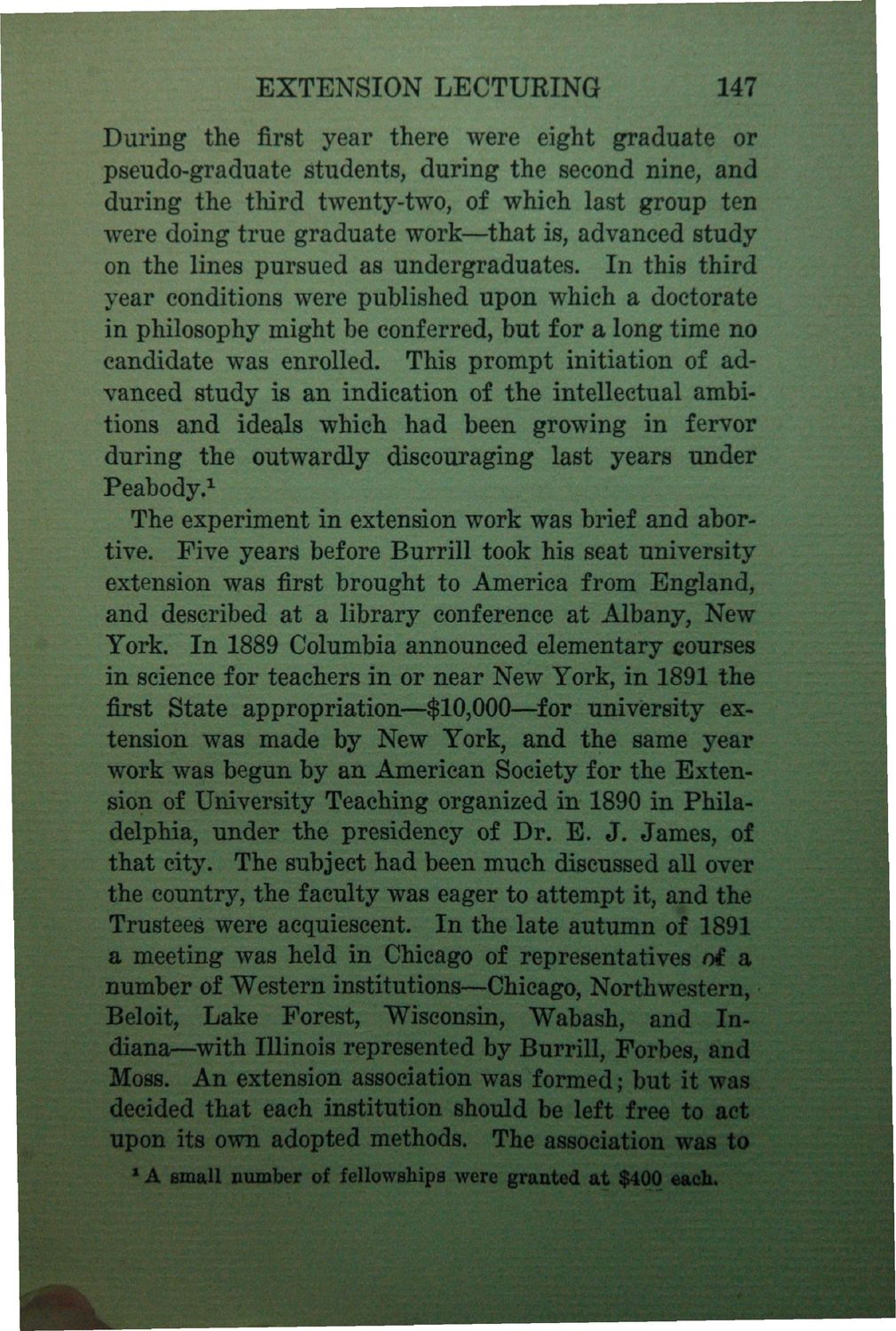| |
| |
Caption: Book - History of the University (Nevins)
This is a reduced-resolution page image for fast online browsing.

EXTRACTED TEXT FROM PAGE:
EXTENSION LECTURING 147 During the first year there were eight graduate or pseudo-graduate students, during the second nine, and during the third twenty-two, of which last group ten were doing true graduate work—that is, advanced study on the lines pursued as undergraduates. In this third year conditions were published upon which a doctorate in philosophy might be conferred, but for a long time no candidate was enrolled. This prompt initiation of advanced study is an indication of the intellectual ambitions and ideals which had been growing in fervor during the outwardly discouraging last years under Peabody.1 The experiment in extension work was brief and abortive. Five years before Burrill took his seat university extension was first brought to America from England, and described at a library conference at Albany, New York. In 1889 Columbia announced elementary courses in science for teachers in or near New York, in 1891 the first State appropriation—$10,000—for university extension was made by New York, and the same year work was begun by an American Society for the Extension of University Teaching organized in 1890 in Philadelphia, under the presidency of Dr. E. J. James, of that city. The subject had been much discussed all over the country, the faculty was eager to attempt it, and the Trustees were acquiescent. In the late autumn of 1891 a meeting was held in Chicago of representatives of a number of Western institutions—Chicago, Northwestern, Beloit, Lake Forest, Wisconsin, Wabash, and Indiana*—with Illinois represented by Burrill, Forbes, and Moss. An extension association was formed; but it was decided that each institution should be left free to act upon its own adopted methods. The association was to 1 A small number of fellowships were granted at $400 each.
| |